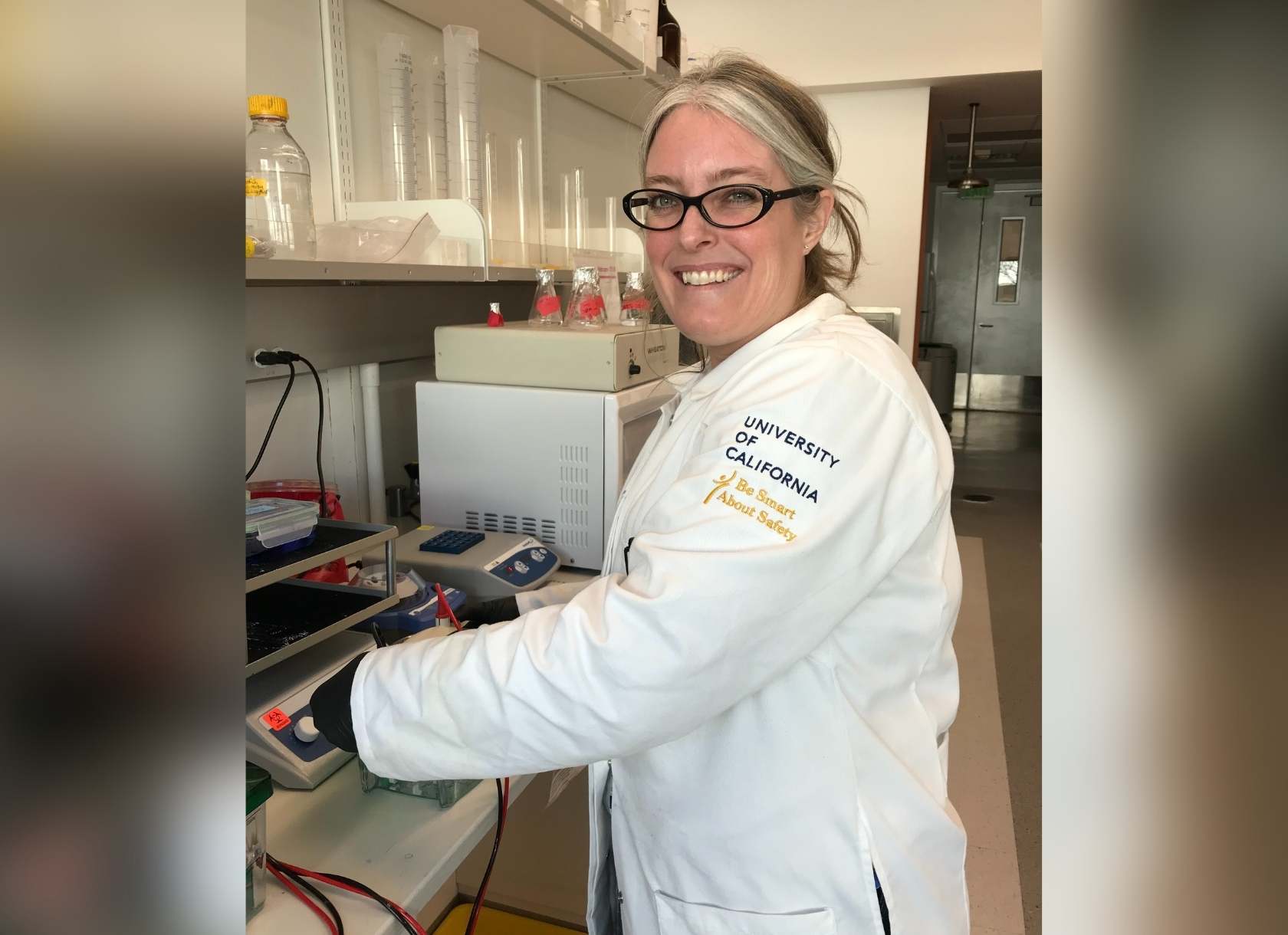
As part of our ongoing series on Scripps’ faculty, the Office of Marketing and Communications sat down with Bethany Caulkins to discuss science education, wildlife, and unexpected opportunities.
Marketing and Communications: How did you first become interested in chemistry? What experiences led you to pursue a PhD in the subject, as well as a research and teaching career?
Bethany Caulkins: I had a more nontraditional path. I went back to school a little bit later, when I was 25, and I started at a community college before transferring to California State University, San Bernardino. During that time, I did an internship at the United States Department of Agriculture, at a salinity lab connected to the University of California, Riverside campus. What drew me to the physical chemistry lab was both the principal investigator, who said I could come work there if I got a PhD, and the intersection of biophysics and chemistry, which I thought was just really cool. Then, while I was in graduate school, I used a physical technique to look at biological structures, and I really liked using physics to answer biological questions through a chemistry lens. But the reason I went to graduate school is because of an internship I had as an undergrad.
Because of my career path, I always tell students that it’s okay not to know what you want to do after you graduate. Your life has opportunities—just keep an eye out for them! Don’t be so focused on one path that you don’t see these other opportunities opening up around you.
MC: Your recent research has examined structures implicated in the progress of Huntington’s disease. What insights do your findings provide about the way this disease develops? What are the next steps for your research?
BC: There are so many questions and we’ve come so far, but the brain is still this whole open area, and we’re finding out what we can little by little. With a lot of these neurodegenerative diseases such as Huntington’s, during autopsies we’re finding that there are big clumps of proteins that gather in brains. Right now, the idea is that these clumps of proteins are causing this brain degeneration. We wanted to understand the binding site of the protein itself to see if there’s a way to stop the aggregation of these proteins—no one’s quite sure why this aggregation suddenly starts to happen, or if the proteins are a symptom or a cause of the disease. If we could find a way to stop that aggregation, I think that would be an amazing step forward.
MC: Beyond teaching at the college level, you’ve also devoted time to science-focused outreach events at elementary schools. How do you encourage future generations of scientists at various stages of their academic experiences?
BC: Outreach is really fun for me because a lot of students think of men when they think of scientists, and I can show people that you don’t have to look like the stereotypical scientist in order to do science. At the elementary school level, exposing students to science as something fun—like making ice cream out of liquid nitrogen—is a way to spark interest. Then, as students get older, showing interest in the projects they’ve been working on at, for example, a science fair, really demonstrates the social nature of science. And science is absolutely a very social discipline because you have to be able to effectively communicate your results, or else other scientists won’t be able to use them to take that research further.
MC: What courses are you looking forward to teaching at the W.M. Keck Science Department, and why?
BC: I’m teaching thermodynamics this semester. It’s not the most exciting topic, but I think it’s really fun to teach. It’s an upper-division physical chemistry class, and it’s really cool to see students I’ve had since their first year in general education courses engage with this high-level science as juniors and seniors.
The general science course is also fun to teach because we show students who haven’t thought about science since high school how science is all around us. Because they’re not STEM majors, these students have a very different point of view, and it’s cool to see how people with different strengths approach different problems.
MC: What’s one fun fact about yourself?
BC: I commute from the middle of nowhere in the mountains! I can actually hike around my property, and there are tons of animals, like foxes and bobcats, that come and drink out of my birdbath. I live in this wilderness area, but then I come to Claremont for work, so it’s the best of both worlds.

